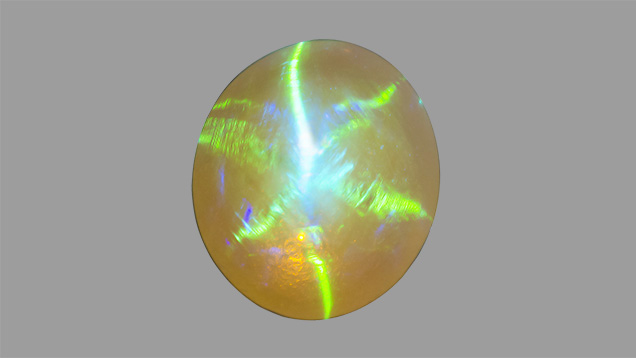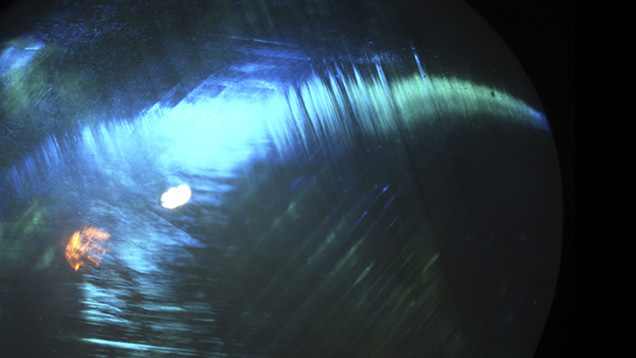Star Opal

Standard gemological testing gave a spot RI reading of 1.43 and a hydrostatically calculated SG of 2.10. When exposed to ultraviolet radiation, the stone fluoresced strong bluish white under long-wave and weak bluish white under short-wave UV. It phosphoresced green after exposure to long-wave UV. Advanced gemological testing by energy-dispersive X-ray fluorescence (EDXRF) confirmed a silica-rich material with some additional trace elements, including aluminum and iron. All of these properties were consistent with opal.
Microscopic examination revealed large parallel planes with play-of-color intersecting to form a hexagonal pattern (figure 2). This is responsible for producing the six-rayed star. This unusual stone serves as a reminder that, unlike asterism in other gem materials, the star in opal is caused by diffraction of light from faults or imperfections in the packing arrangement of silica spheres.

Figure 2. This photomicrograph of the opal shows the intersection of large parallel planes with play-of-color, producing asterism. Photomicrograph by Charuwan Khowpong; magnified 15×.



